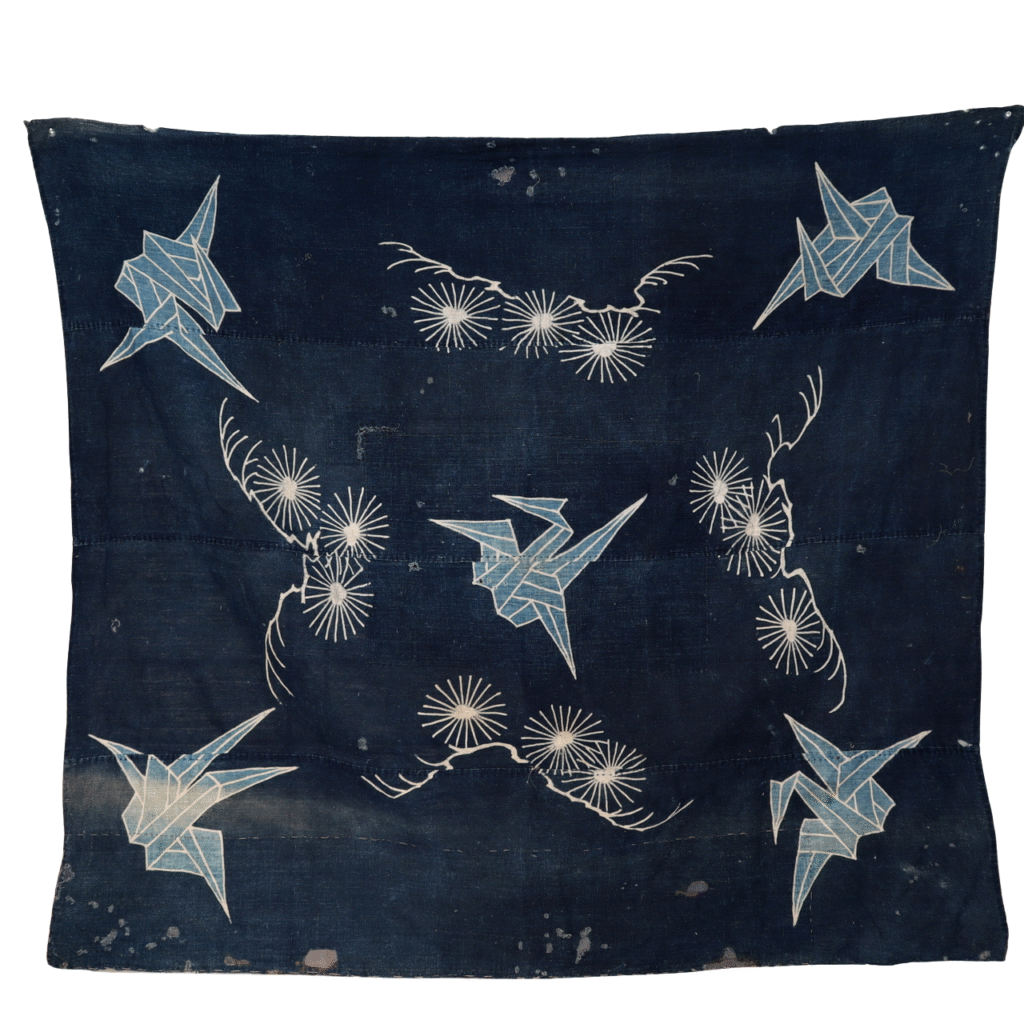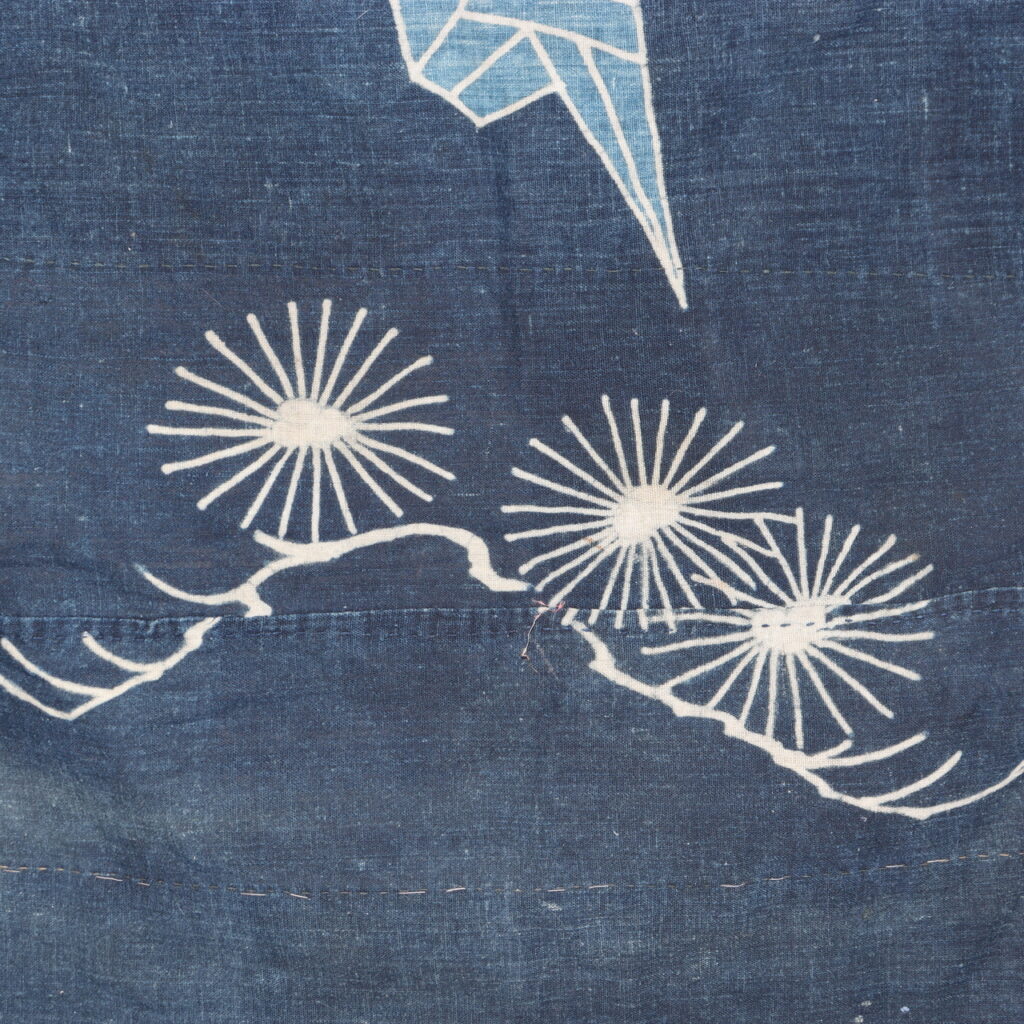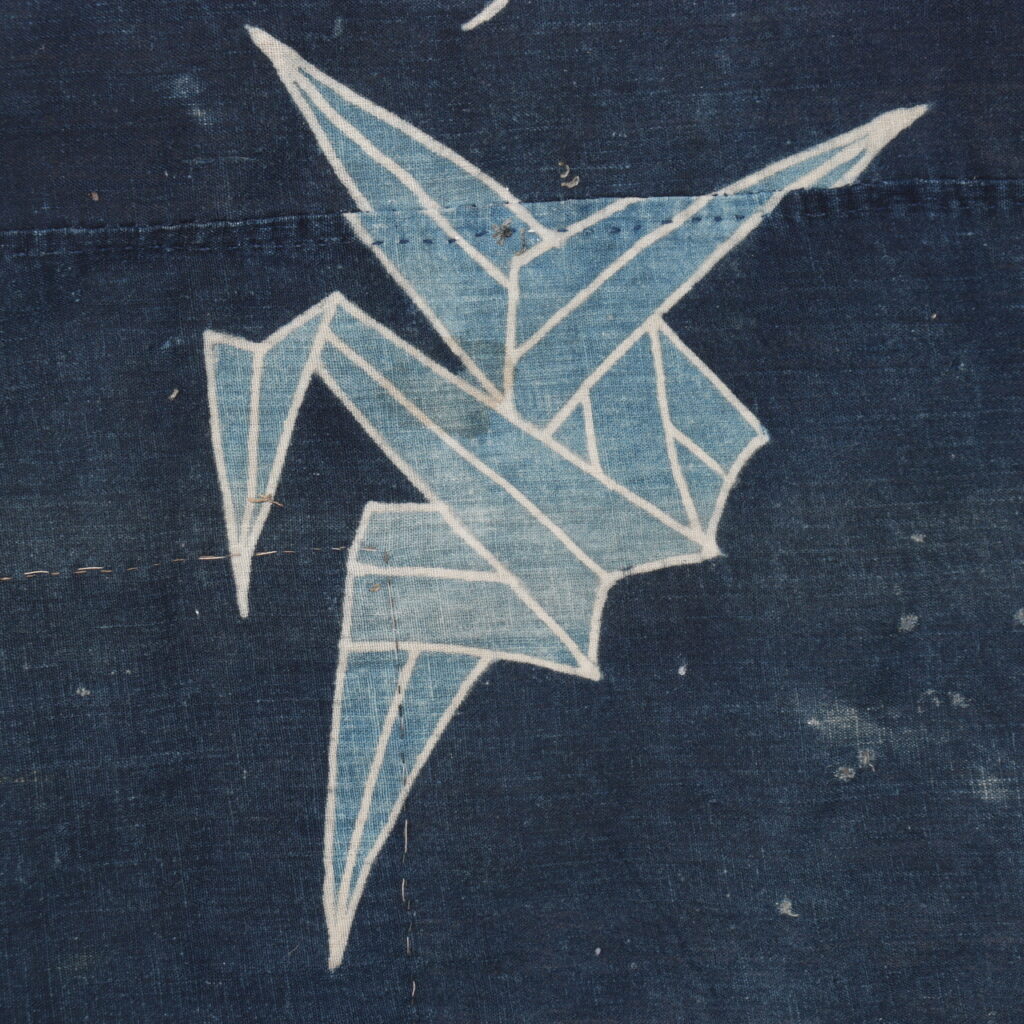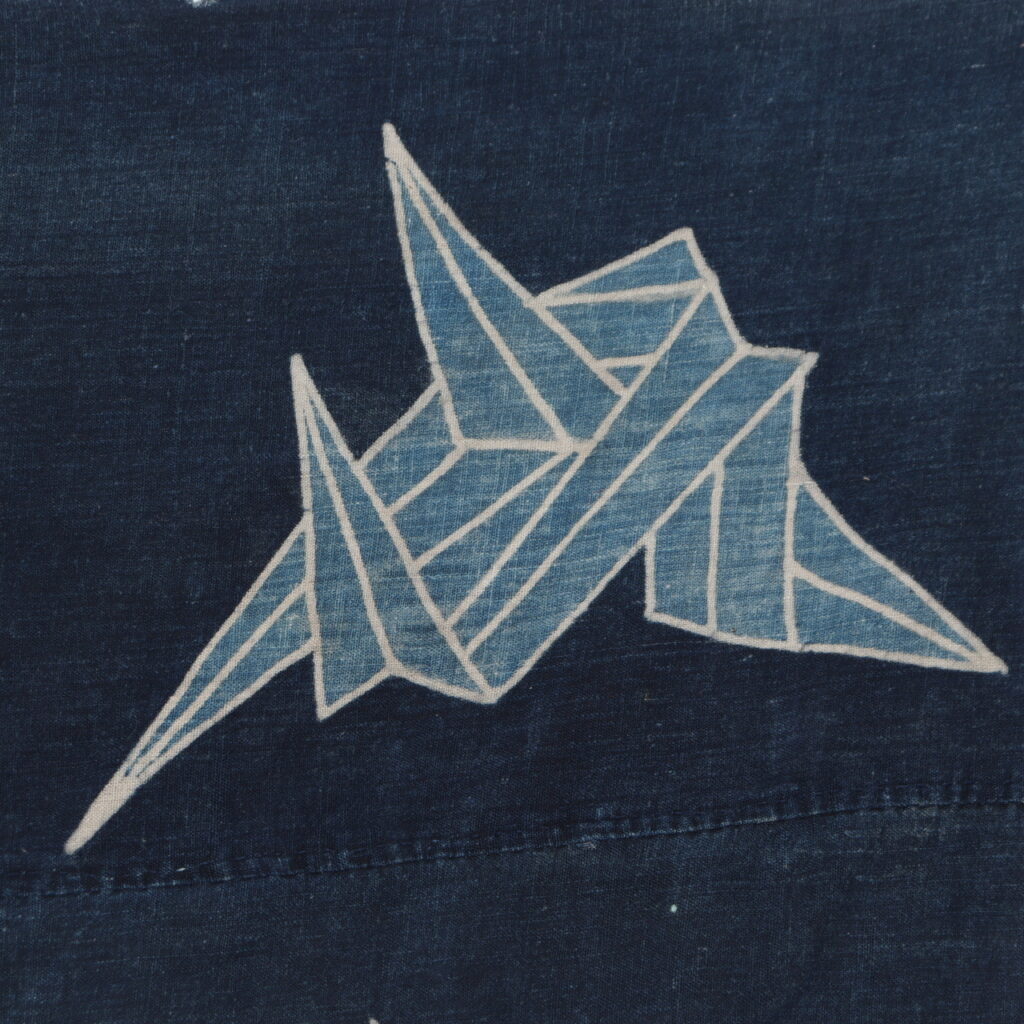





There are fabrics that clothe, and then there are those that tell stories. This Japanese antique indigo-dyed cotton textile—a rich example of tsutsugaki dyeing and boro folk art—weaves together craftsmanship, symbolism, and the quiet resilience of generations past. Adorned with origami cranes and chrysanthemums, this cloth serves as both historical document and poetic object.
The Story Behind This Piece
Originating in rural Japan, tsutsugaki (筒描き) is a freehand resist-dyeing technique using rice paste, where artisans draw designs directly onto cloth before dyeing it—most often with natural indigo. This form of textile decoration flourished during the Edo to Meiji periods, particularly among farming communities who treasured expressive yet functional garments.
This particular piece depicts light blue origami cranes, symbols of hope, longevity, and spiritual peace in Japanese culture. Surrounding them, chrysanthemum motifs radiate outward—associated with the Imperial family and endurance. Beneath these motifs lies handwoven cotton, dyed to a deep indigo blue and later reinforced with patchwork and sashiko stitching in the traditional boro style.
The result is more than a textile. It is a layered narrative of use, beauty, and repair—art born from necessity.
Features That Distinguish This Textile
- Tsutsugaki Decoration: The cranes and floral motifs are drawn using the rice-paste resist technique, showcasing the artisan’s freehand skill and brush control.
- Natural Indigo Dye: The rich, deep blue base comes from fermented indigo plant dye, prized not only for its beauty but also for its insect-repelling properties.
- Boro Mending: Carefully stitched patches reflect generations of use, repair, and renewal. The visible mending—known as boro—has become celebrated as a form of folk aesthetic, resonating deeply with wabi-sabi values.
- Material & Texture: Made from handwoven cotton, the textile has a soft, timeworn touch and visible warp-weft irregularities that affirm its handmade origin.
- Symbolism: The crane is a traditional good-luck motif, often folded into origami and gifted for blessings, recovery, and peace. Combined with the chrysanthemum, this fabric becomes a spiritual and visual blessing.
Why Global Collectors and Designers Cherish Boro Textiles
For collectors of Japanese antiques and folk art textiles, this tsutsugaki boro cloth represents the intersection of artistry, cultural symbolism, and ethical craft.
It appeals to:
- Textile historians and curators of Meiji-era cotton fabrics
- Designers seeking authentic Japanese indigo dyework
- Collectors of boro, sashiko, and wabi-sabi textiles
- Art spaces looking for powerful visual storytelling through fiber
In modern spaces, it can be framed, hung as a tapestry, draped over furniture, or simply appreciated as a meditative object of survival and grace.
Conclusion: A Fabric of Memory, Mended with Care
This tsutsugaki indigo fabric is more than decoration—it is the record of hands at work, seasons passed, and care bestowed. With cranes in flight and chrysanthemums in bloom, it carries an enduring message of life, imperfection, and continuity.
If the item is already sold, please explore our collection of antique Japanese boro and tsutsugaki textiles here:
🔗 Browse our full collection